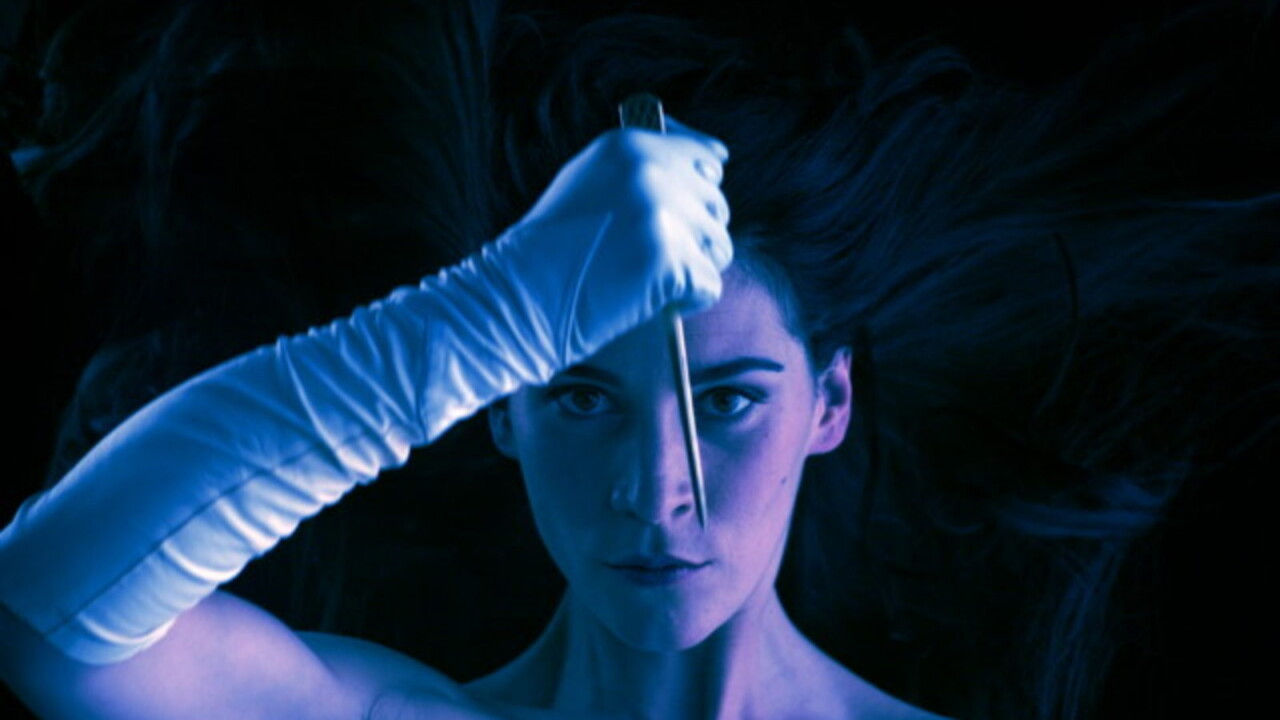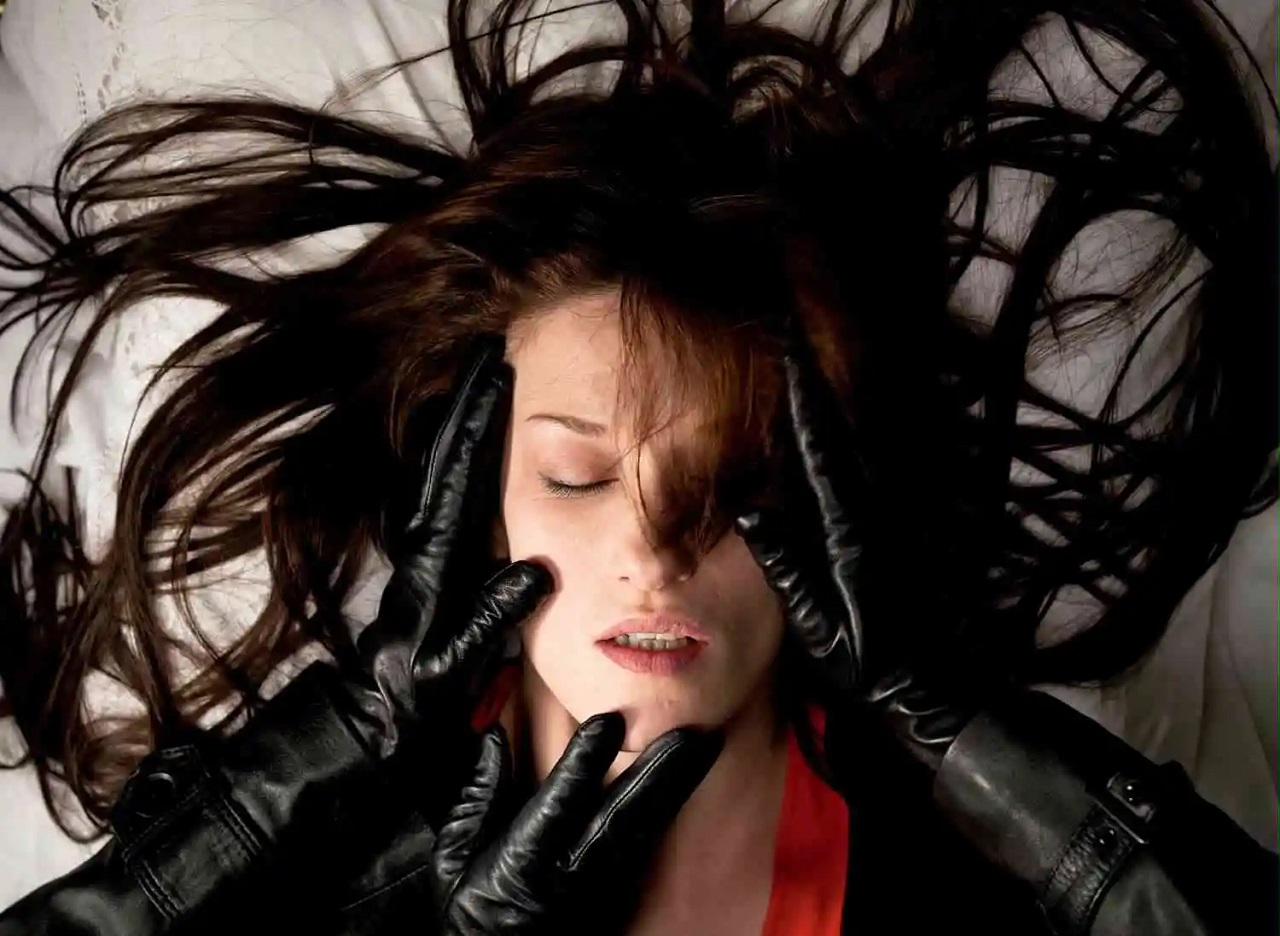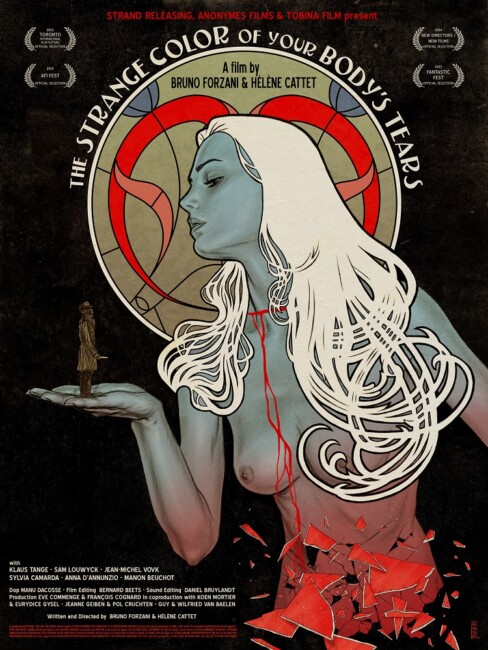(L’Etrange Coleur des Larmes de Ton Corps)
Crew
Directors/Screenplay – Helene Cattet & Bruno Forzani, Producers – Eve Commenge & Francois Cognard, Photography – Manu Dacosse, Visual Effects Supervisor – Dan Bruylandt, Makeup Effects – David Scherer, Production Design – Julia Irrabarria. Production Company – Anonymes Films/Tobina Film/Epidemic/Red Lion/Mollywood/Centre du Cinema et de Audiovisuel de la Federation Wallonie-Bruxelles/VOO (TV-Net-Tel)/Canal+/Cine+/Fonds National de Soutien a la Production Audiovisuelle de Grand-Duche de Luxembourg/Belgacom/Indiefilms.
Cast
Klaus Tange (Dan Kristensen), Ursula Bedena, Joe Koener, Birgit Yew, Hans de Munter, Anna D’Annunzio, Jean-Michel Vovk, Manon Beuchot, Romain Roll, Lolita Oosterlynck, Delphine Brual, Sam Louwyck, Sylvia Camarda, Ann de Visscher, Michael Fromowicz, Alexandre Hornbeck, Fran’ois Cognard, Manon Kaefer, Aline Stevens, Julien Bonischo, Anna Katina, Elsebeth Steentoft, Damiano Morocutti, Lucas Salhani)
Plot
Dan Kristensen returns from a business trip to find that his wife Edwige is missing. As he searches the rest of the apartment building for her and tries to get the police to investigate, he is drawn into the mysteries, secrets and sexual fetishes that his neighbouring tenants hide. As Dan becomes aware that a mystery killer may be hiding in the walls, the reality and fantasy of what he is experiencing begins to blur.
Belgian co-directors (and off-screen couple) Helene Cattet and Bruno Forzani made a sensational debut with Amer (2009), an extraordinary homage to giallo cinema of the 1960s and 70s. Cattet and Forzani next went onto make the equally stylish O is for Orgasm segment of The ABCs of Death (2012). The Strange Colour of Your Body’s Tears was their second full-length film. This was followed by Let the Corpses Tan (2017).
Cattet and Forzani have one of the most unique stylistic quirks of any director(s) – all of their films homage Italian giallo psycho-thrillers. Giallo is an Italian derivation of the psycho-thriller, which was at its height of popularity in the 1960s and 70s. Giallo is based around a series of extraordinarily extravagant and stylish set-pieces, gaudy and psychedelic colour and lighting schemes and an underlying sexual pathology (if not outright misogyny). The most well-known proponent of the giallo film is Dario Argento – you could point to almost any of his works as an example.
The homage to the genre is tipped in numerous places here – the missing woman is called Edwige after Edwige Fenech, one of the most prominent actresses in the original giallo movement. The score has been entirely composed of samples taken from classic giallo films. You are constantly reminded of other films – the scene where Klaus Tange finds a recording of himself saying he is going to make his wife’s life a misery could have been directly uplifted from the opening narration of Argento’s Tenebrae (1982), for instance.


On their ABCs of Death segment, Cattet and Forzani went one beyond the stylistic homage of Amer and stripped the entire film away to a series of brief, subliminal fragmentary sensations – ones that almost let you feel a touch and a caress on the faceless person’s skin. Here the entire film is a blur of fragmentary images designed to provoke and tease – a kaleidoscopic glimpse of things like a leather coat, bound hands, a knife caressing nipples, an earring, the sheer eroticism of a slip falling off a shoulder or a negligee running up a leg, the vividness of a cut made between emerald green eyes and a green pendant, the lusciousness of an elegantly dressed woman in red climbing up a flight of stairs.
The whole film has a breathless eroticism, yet one where danger also lurks not far away at a moment’s notice – two naked bodies come together but broken glass grinds between them. Cattet and Forzani will experiment with just about any cinematographic effect they can think up – split screen, kaleidoscopic patterns, wild lighting schemes and psychedelic patterns. Images often map over and reflect other aspects of the film.
On the other hand, The Strange Colour of Your Body’s Tears feels more like a slick, high-end commercial than it does a film. As this profuse torrent of wild imagery cascades over you, it increasingly starts to feel like stylistic flourish for style’s sake alone. This often comes almost entirely at the cost of any type of narrative coherence. The film has even less story than Amer did – it is nominally about Klaus Tange searching for his wife but is becomes increasingly apparent that it is more about the characters he meets as the film digresses off to tell stories they recount, even into their fantasies. The more the film went on and the more these digressions and fantasies became wound together, I started to lose track of what was happening altogether. About the point that Klaus Tange finds that there seems to be a doppelganger of himself in the house following him, I must confess I didn’t have the slightest idea what the film was about anymore.
(Nominee for Best Cinematography at this site’s Best of 2013 Awards).

